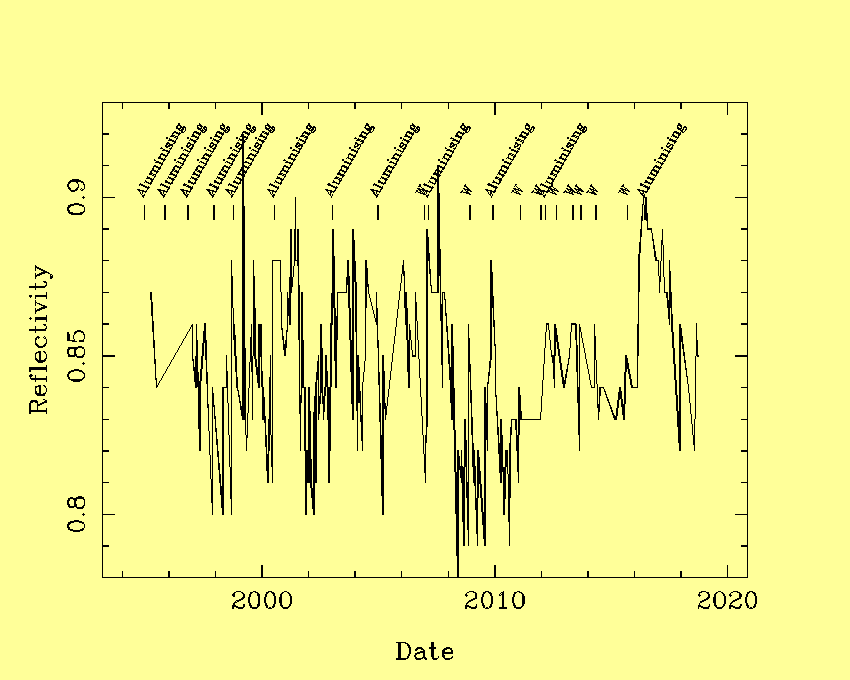WHT mirror reflectivity
The reflectivities of the WHT primary, secondary and Nasmyth
(tertiary) mirrors
are measured at regular intervals with a hand-held reflectometer.
The measurements (and notes on how they are made) can be found on ING's
reflectivity results page.
Primary mirror
The plot below summarises a quarter century of measurements of the reflectivity
of the WHT primary mirror:

The primary mirror is re-surfaced in the WHT aluminising tank every few years.
Between 1997 and 2011, it was also cleaned with CO2 snow every month or so.
The CO2 snow cleaning appears to maintain the reflectivity, but the scattering
coefficients gradually worsen with time.
Since 2011, it has been snow-cleaned roughly every 2 months. During most
of this time it has also been water-washed about once a year (marked 'W' on
the above plot), or whenever the reflectivity appears to be dropping.
The plotted (R-band) measurements were typically taken
before and after aluminising
or washing,
and after (and sometimes before) snow-cleaning.
The mirror is not water-washed or snow-cleaned during scheduled polarimetry runs
(to avoid changing the polarisation characteristics of the telescope).
In January and July 1999 and in Feb 2000,
the UV/V reflectivity ratio was measured via observations of standard
stars and found to be within a few % of the expected values,
suggesting that snow cleaning is as effective in the UV as at V band.
The surface of the primary mirror is in good condition. On 6 May 1999,
it was scratched by a piece of metal falling onto the mirror surface from prime focus.
The scratches were ground out prior to aluminising
in June 1990,
to avoid spreading of any cracks. The area affected is very small.
Secondary and Nasmyth mirrors
The secondary mirror and the Nasmyth flat (the latter usually stowed to allow
light to reach the Cassegrain focus) are less exposed to the
elements than is the primary, and are cleaned and aluminised less frequently.
Chris Benn
(crb@ing.iac.es)
25 February 2019


